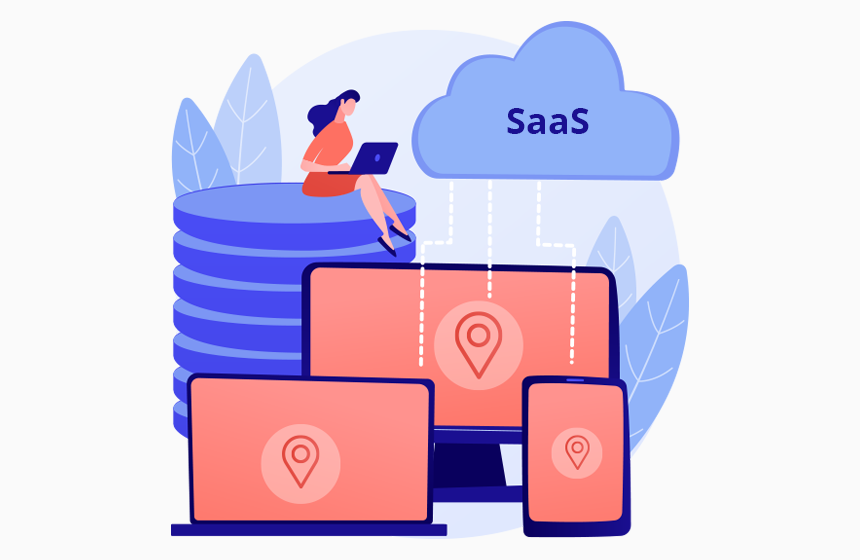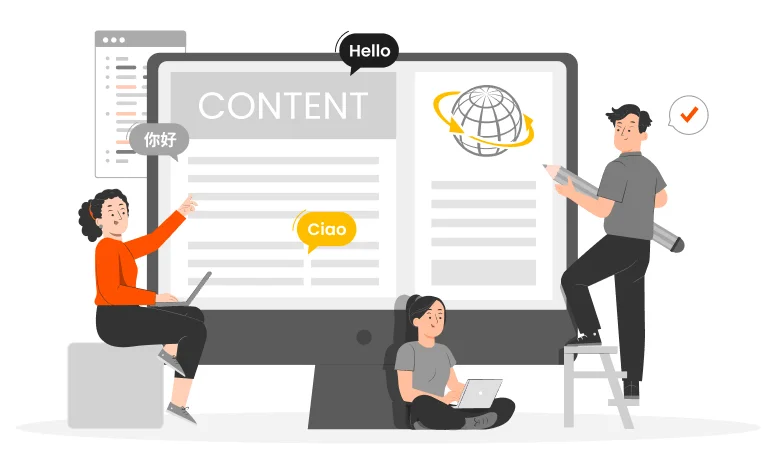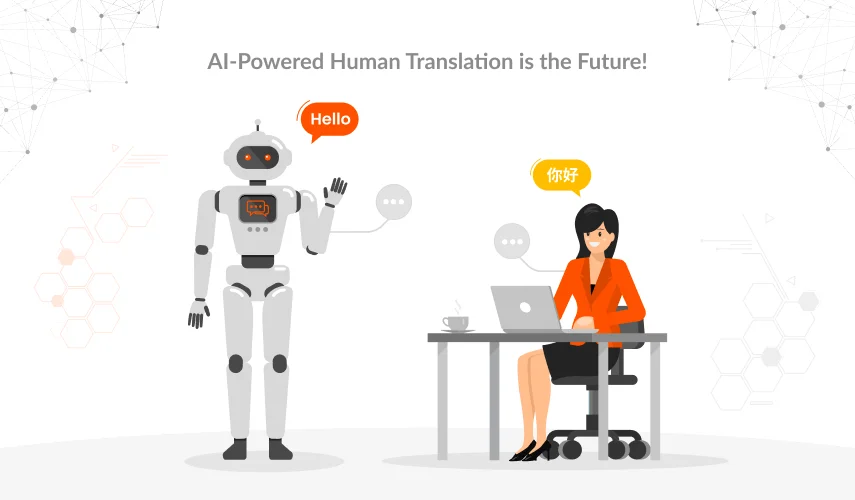Equipped with the latest technology the Software as a Service (Saas) applications require more sophistication than ever to meet the customer’s demands. Due to high-rise competition now, it is more critical to evaluate the app tests. A SaaS app shapes the user experience for better or for worse.
To have the benefit of the doubt, there are several SaaS translation systems that help software companies achieve their primary goals. It is critical for a SaaS company to adapt its product to a diverse global audience to ensure quality sales.
Eventually, with time, the need for localization will only increase. More support teams are needed to localize a good idea and bring it to life. By managing the right technology and localization tools you can build a global product on the basis of the target market.
In this article, we will discuss all the basic details you need to know about SaaS localization.
Why Saas Localization is Important?
English is perceived as the lingua franca but by now people are more clear about its stance. There are other languages in the market too. So, it’s not a surprise to see that users prefer to use products and services that are localized.
Due to the diverse market and audience now SaaS companies are looking forward to i18n saas. According to a report, 56% of the consumers are keener to learn about the information in their own language. Price concerns are now secondary.
Also, almost 95% of people are comfortable with visiting websites in their native language. Naturally, this chain reaction extends to the software too. Therefore the need for software and app localization is now vital.
As a business, if you are trying to expand, then keep two things in mind;
- Localization
- Translation
With the help of the cloud-based localization system, both can be achieved.
Benefits of Saas Localization
Besides the improved sales, there are some quality benefits of SaaS localization like;
1. Eliminating the Culture and Language Barriers
In the world of software and apps, language and culture also act as strong barriers. With the help of SaaS localization, you will be able to communicate with the customer more easily. Once you do, the sales will automatically rise up.
Translating and localizing your product for the customer helps them to navigate according to their preferences. i18n SaaS will work in your favor.
2. Improved Customer Experience
If done properly, localization is a great way to implement it in the SaaS app. When you offer software in the local language from the very beginning, you are building customer confidence in your brand.
A satisfied customer is an advocate for your localized product. Results can be seen in the shape of brand awareness and reputation in the market.
3. Competitive Edge
Localized products have two major benefits; credibility and dependability. If your SaaS product is available in the local language, you have the benefit of a competitive advantage over your competitors.
Because you will be able to communicate with the locals in their own language, you are overcoming the cultural and language barriers. Saas localization systems are helpful in letting you achieve your rightful market position.
4. Competitive Costs
Did you know an i18n SaaS product can increase your revenue?
The local product gives you the advantage of entering more markets, therefore the profit margins increase. If you are using a good SaaS localization system you can save your money over needless updates and focus on translation from the very start.
To ensure you can enjoy these benefits you must follow the proper SaaS localization service.
How to Manage Saas Localization
Now that the common benefits of SaaS localization are clear, let’s take a look at how you can manage the localization process.
1. Target Audience
SaaS products are not limited to localization only. It’s more about adopting the software or app’s tone, color palette, data, online payments, etc.
For instance, a European customer might prefer to use formal yet simple communication, unlike US-based clients who prefer to be chatty and casual. Similarly, the British audience may not care much about online payments but a German customer may want a proper invoice of the payment.
See the difference?
It is important to offer the right localization and translation to the right target audience. So you need to be careful in your selection of the locales and localization.
2. Translation Strings
When a SaaS product enters the internationalization phase, make sure that strings are easy to extract, localize, and reinsert into code.
In simple words, the title, product name, error messages, and even images are clearly visible to the user.
It is important for the developers here to look out for strings that will otherwise make the localization process complex for the translators. Also, avoiding concatenation or batching is helpful.
An incomplete translation will do your product no good. The localized version is missing messages and therefore you need to keep track of the translation. So make sure that you can take care of the strings from the beginning.
3. Right Investment
A translation agency can be a tricky investment for any SaaS company. IT software houses are keener to make their products valuable for the local audience. Therefore investing in the right SaaS localization system plays a vital role in improved product performance.
4. Automation
An agile app includes lots of automation. It means your SaaS model must have the much-needed automation for translation. Elements like version control, chat-ops, etc. can make a prominent difference in your product.
The more you invest in automation, product functionality is likely to improve.
5. Localization Software
A SaaS localization system is your chance to fulfill localization needs. This means you need to hire an agency that specializes in software localization. They must cover your localization needs as per business requirements.
SaaS Localization Workflow: How it Works
Managing the localization becomes easier with clear goals. Now let’s take a look at how the SaaS localization process takes place.
1. Decide the Target Content
The software consists of several elements. You need to decide the priority elements like content, image, color, etc. that need localization.
For instance, your first choice can be to translate the text, then videos and images. It gives you a considerable amount of time to manage the translation for the target content. The translation process will become easier for the translator if the SaaS translation system acts as a dynamic manager.
Your content strategy must be based on using XML. It is the most translation-friendly language format. Also, it is cost-effective which makes it desirable for the SaaS localization to prepare the XML files for the translation purpose. A localization engineer takes care of the content translation to avoid any bugs and issues.
2. Prepare the Team
When the localization process begins, all stakeholders must be involved. They should be in sync with one another. A localization manager looks over the project from start to end.
They need to coordinate with other team players, and clients and must make sure that localization is going in the right direction. Communication at this point is critical. The linguistic manager is responsible for ensuring team coordination and that they complete the process at the allocated time.
3. Assign Tasks
The localization tasks begin with the translation process. It’s time to extract the resource files. Once you have the files in the XML format you can automatically extract the strings with the CAT tools.
So the translation and localization project manager needs to assign the tasks that will speed up the localization process for the SaaS product.
All localization tasks required recording so that in case of any errors the task can be traced back to the individual who performed it. Communicate with the team members directly. Spend time with the team from translators to developers to make sure everyone is on the same page.
However, the localization process for the software needs to follow up a “fire and forget” solution. One translation technique for the software if doesn’t work is to instead of wasting time on it, create a new technique to make it a success.
4. Initiate Translation
When you invest in the CAT tools and the TMS systems, make sure that it’s in the best interest of the translators.
The translation process needs to be streamlined even before the beginning of localization. This way the translator will have a fresh copy of the original content and the localized version as well.
To ensure optimized SaaS localization make sure to;
- Set the maximum length of the character. It helps translators to localize the software without any errors. They set up certain parameters keeping the expansion or contraction of the text length.
- A centralized system is best to use for SaaS localization.
- Specialized or subject matter experts are the key team players to enroll as human translators.
- The use of a glossary at this point is crucial. The technical and non-technical aspects of the SaaS product terms glossary are a handy tool for translators. This helps to approve the human translation without the risk of errors.
- It is important to follow a style guide even for SaaS localization.
5. Evaluating / Testing
For ideal software localization, quality assurance must be taken care of at every step. Once the translation is at the end stage you need to begin the software testing as well.
For this purpose, have the team of testers ready for automated and manual localization testing. Testing both ways gives authenticity and helps to reveal the errors. Instructions to check the edge cases also need consideration.
For instance, if the text is longer than needed, and also has special characters, then the professional linguist will need to find ways to ensure the content is adjusted. Any delays in text displays, flickering images, currency or changing formats, etc. are accountable for testing.
At the end of the evaluation, a final report is given for auditing.
6. Updating and Maintenance
Once testing and evaluation are done, you will notice a prominent change in the SaaS product. But do keep in mind that data and content require maintenance and upgrades too.
With time, even language changes. Therefore, you need to keep track of the updates required too. Take a thorough look into the missing chunks that need a translation. After localization, the product maintenance checks needs are performed by the regular feedback of customers.
Both linguists and localization engineers review the quality of the process. The linguists (translators) will work on the localization content quality whereas the engineers will be working side by side with the UI to maintain the compatibility and functionality of the SaaS product.
Challenges in the SaaS Localization
The SaaS localization process is not as easy. It requires investment and time. Therefore you also need to understand the common localization challenges that the SaaS translation systems often have to face.
1. Layout trouble
It is a feat to maintain the software layout throughout the localization process, especially in terms of text length.
2. Semi-finished translation
In case of translation reference, like reference material, is not adequate enough then chances are your translation will be faulty.
3. Images and videos
Images that contain text are a hassle to localize. Image localization reduces the costs but translators need to take care of the images and videos that require translation as well.
4. Localization partner
Looking for the cheapest option means the localization quality can become questionable. Finding the right SaaS translation system means it must be agile and fits your description.
5. Agility concerns
Minor details make a huge difference in the localization process. If your software does not cope with agility, the process to translate and localize will be slow. This means organizing planning, testing, and updates will also be slow.
Conclusion
Localization is the demand of the hour or the IT sector. SaaS software and apps are always continually evolving. Therefore your localization must be the right spot to increase and create SaaS products worth for the local customer. To become innovative you need a trustable and reliable partner, so it’s time you pair up with the best translation agency.



